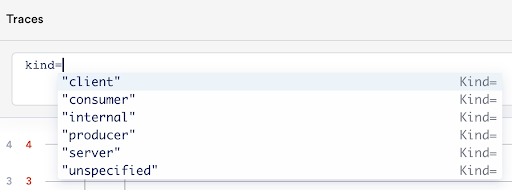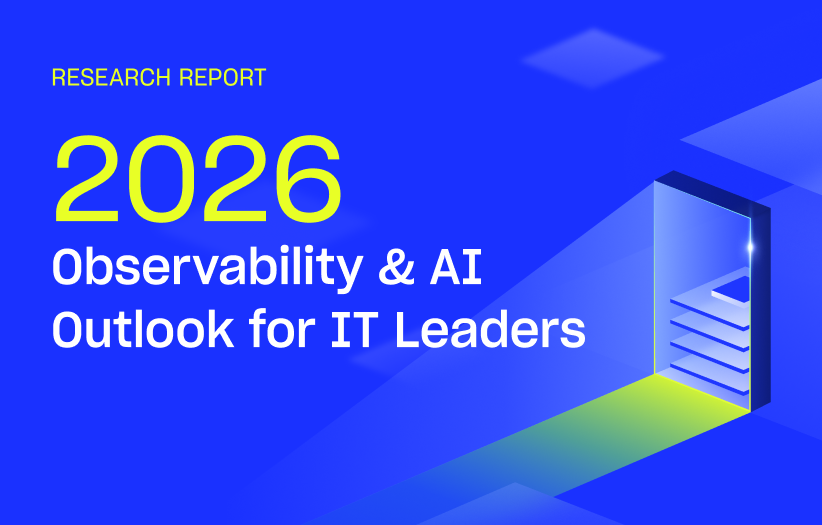Highlights
- General Updates: LM APM enhancements, support for new AWS and GCP regions, several user interface bug fixes, and more.
- Updated Monitoring: Added monitoring for VRRP using SNMP, Zoom service status, Azure NetApp integration, and more.
General Updates
LM APM
Enhancements
- LM Synthetics is now fully available. For more information, see LM Synthetics Overview.
- Version 1.0.05 of LogicMonitor’s OpenTelemetry Collector is now available. Enhancements to the OpenTelemetry Collector include:
- Validated external config in container image via santaba API.
- Added support for OTEL Collector image on AKS – containerd runtime. If LM OTEL is running in a containerized environment, two new properties with key and value isContainer=true and containerRuntime=containerd are added. The “Docker=true” property has been removed.
- Removed the system.ips property from the OTEL device properties.
- Added support for Azure Container Instances for LM OTEL.
- Removed the otelcol_process_runtime_total_alloc_bytes DataSource.
- Added support for ARM64 architecture in LM OTEL container image.
- You can now limit the number of results returned in your Advanced Filter on the Traces page.
- The Traces Graph now displays your trace data (spans and errors) ingested over time. You can switch between “Latency” and “Time Series” on the Traces Page, and the graph updates accordingly. For more information, see Traces Page.
- You can now create an Advanced Filter for the span-kind attribute for your trace data.

Bug Fixes
- Fixed an issue that prevented navigation to a corresponding trace from an APM-based alert.
- Fixed an issue that prevented filters from persisting when switching between Basic and Advanced Filtering.
Container Monitoring
Enhancements
- Resource tree organization by namespace is now enabled by default.
- Alerts can now be configured for each namespace. You can also fine-tune alert suppression by configuring the “disableResource Alerting” helm chart value.
Bug Fixes
- Fixed an issue that caused linear growth in CPU consumption by Argus.
- Fixed an issue that led to nodes incorrectly getting added and removed from monitoring.
- Fixed an issue that led to the collector pods crashing when a large number of deployments were detected.
LM Cloud
Enhancements
- You can now view resources created for SaaS and SaaS lite monitoring from the Account Information page. You may find this useful for understanding how many SaaS resources you have in LogicMonitor and comparing that to how many you purchased.
- Added support for the ap-southeast-3 AWS region.
- Added support for the europe-central2 and europe-west6 GCP regions.
- Device properties now display which type of message queue (Active MQ or RabbitMQ) discovered queues are, if applicable.
Topology
Enhancements
- The Topology page now displays a tooltip with the node name if the name is too long to fully display on the screen.
- The Pin and Unpin buttons are now available from the Detail pane.
- Hierarchical and Radial topology layouts are now disabled for maps with over 5000 nodes displayed.
Bug Fixes
- Fixed an issue that caused some nodes to occasionally disappear when unpinned.
LM Logs
Enhancements
- You can now use the Actions menu options to filter log metadata.
User Interface
Bug Fixes
- Fixed an issue that occasionally prevented users from accessing the Alerts page.
NetFlow
Bug Fixes
- Fixed an issue that prevented traffic interface filters from updating after a device filter had changed on the group-level Traffic tab.
LM Collector
Bug Fixes
- Fixed an issue that caused log file EventSources to fail to alert.
LogicModule Releases
New and updated LogicModules are available for you to import from the LogicMonitor Public Repository. This section lists the LogicModules that are new in this release, updated in this release, or will be removed in a future release. Changes related to the LogicModule feature will be listed under General Updates.
New LogicModules
| LogicModule Name | Details |
| (1 DataSource) Viptela_VRRP_Status | Added monitoring for VRRP using SNMP. |
| (1 DataSource) Microsoft_Office365_MailboxUsageDetail | Added monitoring for mailbox statistics. |
| (1 DataSource) Saas_Zoom_ServiceStatus | New module for Zoom service status monitoring. |
| (9 DataSources) Citrix_VAD_ApplicationUsage Citrix_VAD_ConnectionFailureSummary Citrix_VAD_DeliveryGroups Citrix_VAD_LoadIndexMetrics Citrix_VAD_MachineHotfixLogs Citrix_VAD_MachineSummary Citrix_VAD_Services Citrix_VAD_SessionActivitySummaries Citrix_VAD_Troubleshooter (1 PropertySource) addCategory_CitrixMonitorServiceV4 | Added monitoring for Citrix VAD using OData4 for LTS version 7.15.1912 and higher. |
| (4 DataSources) DellEMC_PowerSwitchNSeries_CPUProcessUtilization DellEMC_PowerSwitchNSeries_GlobalStats DellEMC_PowerSwitchNSeries_ResourceMetrics DellEMC_PowerSwitchNSeries_Temperature (1 PropertySource) addCategory_PowerSwitchNSeries | New monitoring package for Dell EMC Power Switch N Series using SNMP. |
| (1 DataSource) StatusIo_Status | New SaaS module for monitoring StatusIo on cloud Collectors. |
| (1 DataSource) Salesforce_Status | New monitoring for Salesforce instance status. |
| (1 DataSource) SSL_Certificate_Chains | New package for more complete monitoring of SSL certificates. |
| (1 DataSource) Microsoft_Azure_NetApp_Volumes | New monitoring for Azure NetApp integration. |
| (1 DataSource) Microsoft_Azure_NetApp_Pools | New monitoring for Azure NetApp integration. |
Updated LogicModules
| LogicModule Name | Details |
| (1 DataSource) Microsoft_Office365_ServiceHealth | Collection updated to collect data every 15 minutes (previously every 1 hour). |
| (5 DataSources) SilverPeak_Disk SilverPeak_Memory SilverPeak_NextHops SilverPeak_System_Status SilverPeak_Tunnels (2 PropertySources) addCategory_SilverPeak addERI_SilverPeak (1 TopologySource) SilverPeak_Topology | Improved credential handling to exit early if the necessary credentials haven’t been provided to reduce bad login attempts. |
| (2 PropertySources) addERI_Device addERI_HPSwitch (1 TopologySource) Networking_L2_snmpSwitch | Improved mapping for switches. |
| (1 DataSource) Cisco_UCS_Chassis (1 PropertySource) addERI_Cisco_UCS (1 TopologySource) Cisco_UCS_Topology | Improved mapping for UCS managers and FIs. |
| (1 DataSource) Nimble_Volume_Latency | Fixed an issue that caused data collection issues with instances containing “:”. |
| (1 DataSource) Kubernetes_Deployment | Updated module for better Collector performance. |
| (1 DataSource) PaloAlto_FW_SystemResources | Increased the alert interval for pct_used datapoints. |
| (1 ConfigSource) PaloAlto_FW_CLIConfigs | Added timeouts to expect for SSH connection using the host property “ssh.timeout” and falling back to the default expect timeout in the Collector when the host property is not configured. |
| (1 DataSource) VMware_vCenter_VMStatus | Added threading to data collection to prevent script timeouts in large environments. You can customize the threadpool size by adding the host property esx.vmperformance.poolsize. Size is restricted to 1 to 10 and defaults to 1 when not configured. |
| (1 DataSource) Fortinet_FortiGate_SDWAN | Updated datapoint descriptions and calculations to accurately reflect units represented. Note that some datapoint names do not correctly reflect the units of the data they represent in order to maintain history due to this being incorrectly named previously. |
| (1 DataSource) Cisco_CUCM_Services | Added support for devices that return XML response in a different format. |
| (1 DataSource) LogicMonitor_Portal_Collectors | Updated the Active Discovery schedule to only occur once since the output is hardcoded to the two Collector operating systems supported by LogicMonitor. |
| (1 DataSource) addCategory_KubernetesKSM | Updated to take the namespace dynamically rather than using the default namespace. |
| (1 DataSource) Cisco_EIGRP_Peers | Added datapoint for tracking SNMP timeout and stopping PeerDown datapoint from alerting when SNMP timeouts. |
| (2 PropertySources) addCategory_TopoSwitch addERI_Windows (1 TopologySources) Networking_L2_snmpSwitch | Updated to handle vLAN bridge matching. |
| (1 DataSource) AWS_Elasticsearch_DataNodes | Added new datapoints and graphs for Kibana node health. |
| (1 DataSource) AWS_S3_Performance | Changed the TotalRequestLatency_raw datapoint from Sum to Average. |
| (1 DataSource) Citrix_XenApp_HypervisorConnections (3 PropertySources) addCategory_CitrixEUEM addCategory_CitrixMonitorServiceV2 addCategory_Citrix_Licensing | This package of modules allows monitoring of Citrix Virtual Apps and Desktops 7.15.1912 LTSR or higher. These modules operate on resources that are running Citrix (VAD) Virtual Apps and Desktops 7.15.1912 LTSR or higher. Most of the new DataSources query the API for data via the OData4 API, PowerShell, and WMI; whereas the prior suite relied mainly on the OData2 API, PowerShell, and WMI. |
| (1 DataSource) Microsoft_Azure_VirtualDesktopSessionHosts | Updated the Active Discovery schedule to every 1 hour. |
| (1 DataSource) EMC_LUN_NaviSecCLI | Wildvalue now replaces illegal characters which previously caused data collection to fail. This change will reset instance history. |
| (1 PropertySource) addCategory_Ruckus_SZ | Expanded coverage to include more API versions. |
| (1 DataSource) Cisco Switch Stack- | Updated the StackState datapoint threshold to error. Added additional graphs and better alert message and description to match current standards. |
| (1 PropertySource) addERI_Linux (1 TopologySource) Networking_L2_snmpSwitch | Expanded topology coverage for 3PAR devices. |
| (1 DataSource) SSL_Certificates (1 PropertySource) Device_BasicInfo | Updated to include the use of ports discovered in Device_BasicInfo. |




